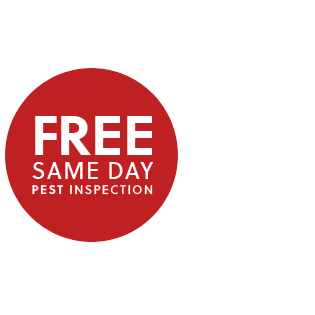Fatal attraction: What makes termites fall in love with your home?
No day represents the power of attraction better than Valentine’s Day. Chocolates, wine, a nice dinner, and flowers all speak the language of love. For termites, the language of love is spoken in wood.
Termite swarming season is right around the corner, and it is incumbent on all of us to understand how and why these aggressive, relentless pests feed around-the-clock on wood in our homes. Even if your home is built with brick or vinyl, termites can bypass the exterior to enter and feed on ceilings, floors, cabinets, furniture – and even cardboard boxes or canvases.
Over the years Clark, your friendly pest control, grounds care, and termite expert, has witnessed thousands of California homes falling prey to damage caused by destructive subterranean termites.
How much can this damage run the average homeowner? According to research from the National Pest Management Association, how does a cool $3,000 sound? In many instances, those costs were not covered by insurance.
What attracts subterranean termites to your home?
Subterranean termites are found across the state wherever moist soil is present, and they are the most destructive termite species. Swarmers are most often seen on warm late winter or spring days following a rainfall, and can be confused with other flying insects.
- Wood in contact with soil: Wood in direct contact with soil and home foundations can provide an access point for termites, like subterranean termites, to get inside. Dead tree stumps, fallen trees and branches, or any rotting wood material also serves as fuel for termites.
- Improper drainage or excess moisture: Subterranean termites are attracted to moisture; they need it to survive. Excess moisture from heavy rains and flooding, broken sprinkler heads and pipes, or clogged gutters can cause excess moisture to build up and make adjacent wood and insulation vulnerable to termites.
- Cracks in the foundation or siding: Any cracks in a foundation or gaps in siding can provide termites with a route to get inside. Subterranean termites, the most encountered termite in California, build mud tubes in cracks and use those tubes to move indoors. Cracks around windows and doors also allow swarmer termites of all species to gain access.
- Firewood or woodpiles: Many people keep firewood stacked against their homes for easy access. However, this can draw termites toward the home and provide a point of entry. Clark recommends keeping firewood and woodpiles at least 20 feet away from the home and, if possible, store wood raised at least five inches from the ground.
- Mulch: This ground covering is frequently used around the home’s exterior near the foundation to improve curb appeal. However, mulch can serve as a source of food for termites and retains moisture, which attracts these destructive pests. Minimize using wood mulch and keep it at least 15 inches from the foundation.
The first step to preventing termite issues is to get a free termite inspection of your home performed by a licensed and highly trained Clark Pest Control termite inspector who will examine your home inside and out.
For maximum protection against termites, you also should ask about Clark Pest Control’s exclusive Termite Infestation Prevention program (T.I.P.) which is designed to cover your home from future infestations and damages from all species of termites.
A complete termite inspection must be completed to determine if your home qualifies. Then, for a small monthly fee, you can avoid costly out-of-pocket treatment and repair expenses.
If you think your home is being threatened by termites, call California’s trusted, friendly pest, rodent, and termite control and removal expert, Clark, at (800) WE-NEED-YOU (936-3339) or email us at clarkcares@clarkpest.com.
Until next time, the pest management professionals at Clark Pest Control thank you for helping to keep unwanted pests out of your home and yard.
Clark’s commitment to safety
Clark Pest Control remains committed to safeguarding your home from pests during these challenging times. Our service technicians use such personal protective equipment as gloves, masks, and respirators, they practice social distancing, and they adhere strictly to all Centers for Disease Control and Prevention guidelines when servicing inside or outside your home.


